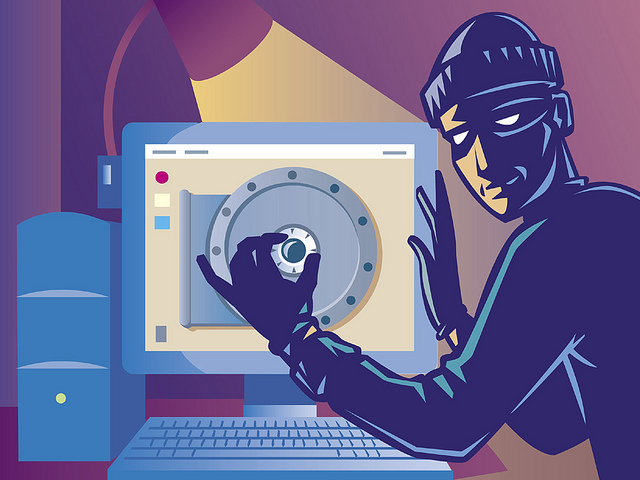VLAN Troubleshooting Commands
Save time by using these four commands to quickly track down and resolve VLAN-related problems.
SNIA Releases Data Protection Guidance for Storage Pros
Storage Networking Industry Association white paper provides recommendations for handling issues such as data retention, retention, and archiving.
Podcast: Automation, Intent-Based Systems and Everything Else
A while ago Greg Ferro invited me for another fireside chat on Packet Pushers podcast. Hope you’ll enjoy our discussion.
HPE Denies It’s Partnering with Huawei, Taps Crisis Public Relations
 HPE says that Huawei's claim that is is partnering with HPE is not true. This is just the latest public relations problem for Huawei in the U.S.
HPE says that Huawei's claim that is is partnering with HPE is not true. This is just the latest public relations problem for Huawei in the U.S.
Comment la commutation « White Box » canalise Trader Joe’s

![]() L’année 2018 est une année phénoménale pour être dans le secteur de la mise en réseau désagrégé. Il n’y a jamais eu un meilleur moment d’y être – non seulement pour les vendeurs, mais aussi pour les chefs d’entreprise eux-mêmes. Le marché pour l’innovation du réseau s’est enfin precisé après une longue balade à travers le désert qui compose la piété du SDN académique, et le hardware sur lequel fonctionne l ‘infrastructure réseau désagrégé basé sur le Linux est maintenant de calibre mondiale – les mêmes ASICs et le même hardware qu’utilisent les vendeurs actuels, et probablement les mêmes câbles électriques, si l’on digne regarder d’assez près.
L’année 2018 est une année phénoménale pour être dans le secteur de la mise en réseau désagrégé. Il n’y a jamais eu un meilleur moment d’y être – non seulement pour les vendeurs, mais aussi pour les chefs d’entreprise eux-mêmes. Le marché pour l’innovation du réseau s’est enfin precisé après une longue balade à travers le désert qui compose la piété du SDN académique, et le hardware sur lequel fonctionne l ‘infrastructure réseau désagrégé basé sur le Linux est maintenant de calibre mondiale – les mêmes ASICs et le même hardware qu’utilisent les vendeurs actuels, et probablement les mêmes câbles électriques, si l’on digne regarder d’assez près.
Alors où entre Trader Joe’s – un supermarché américain très performant – dans cette équation ? En quatre mots: la proposition de valeur. Alors que les vendeurs de l’OS réseau « white box » comme Pica8 n’ont pas délibérément cherché à émuler les valeurs de l’entreprise Trader Joe’s, il s’avère que c’est plus ou moins ce que nous avons fait. La configuration de nos valeurs est curieusement similaire.
Meilleure qualité au moindre coût? Oui.
Service et réactivité comme buts principaux? Encore oui.
Utiliser les mêmes produits que nos plus grands compétiteurs, mais sans noms de marque? Continue reading
Comment la commutation « White Box » canalise Trader Joe’s

![]() L’année 2018 est une année phénoménale pour être dans le secteur de la mise en réseau désagrégé. Il n’y a jamais eu un meilleur moment d’y être – non seulement pour les vendeurs, mais aussi pour les chefs d’entreprise eux-mêmes. Le marché pour l’innovation du réseau s’est enfin precisé après une longue balade à travers le désert qui compose la piété du SDN académique, et le hardware sur lequel fonctionne l ‘infrastructure réseau désagrégé basé sur le Linux est maintenant de calibre mondiale – les mêmes ASICs et le même hardware qu’utilisent les vendeurs actuels, et probablement les mêmes câbles électriques, si l’on digne regarder d’assez près.
L’année 2018 est une année phénoménale pour être dans le secteur de la mise en réseau désagrégé. Il n’y a jamais eu un meilleur moment d’y être – non seulement pour les vendeurs, mais aussi pour les chefs d’entreprise eux-mêmes. Le marché pour l’innovation du réseau s’est enfin precisé après une longue balade à travers le désert qui compose la piété du SDN académique, et le hardware sur lequel fonctionne l ‘infrastructure réseau désagrégé basé sur le Linux est maintenant de calibre mondiale – les mêmes ASICs et le même hardware qu’utilisent les vendeurs actuels, et probablement les mêmes câbles électriques, si l’on digne regarder d’assez près.
Alors où entre Trader Joe’s – un supermarché américain très performant – dans cette équation ? En quatre mots: la proposition de valeur. Alors que les vendeurs de l’OS réseau « white box » comme Pica8 n’ont pas délibérément cherché à émuler les valeurs de l’entreprise Trader Joe’s, il s’avère que c’est plus ou moins ce que nous avons fait. La configuration de nos valeurs est curieusement similaire.
Meilleure qualité au moindre coût? Oui.
Service et réactivité comme buts principaux? Encore oui.
Utiliser les mêmes produits que nos plus grands compétiteurs, mais sans noms de marque? Continue reading
BGP leaks and cryptocurrencies

Over the few last hours, a dozen news stories have broken about how an attacker attempted (and perhaps managed) to steal cryptocurrencies using a BGP leak.

CC BY 2.0 image by elhombredenegro
What is BGP?
The Internet is composed of routes. For our DNS resolver 1.1.1.1 , we tell the world that all the IPs in the range 1.1.1.0 to 1.1.1.255 can be accessed at any Cloudflare PoP.
For the people who do not have a direct link to our routers, they receive the route via transit providers, who will deliver packets to those addresses as they are connected to Cloudflare and the rest of the Internet.
This is the normal way the Internet operates.
There are authorities (Regional Internet Registries, or RIRs) in charge of distributing IP addresses in order to avoid people using the same address space. Those are IANA, RIPE, ARIN, LACNIC, APNIC and AFRINIC.
What is a BGP leak?
The broad definition of a BGP leak would be IP space that is announced by somebody not allowed by the owner of the Continue reading
Celebrating ECMP in Linux — part one
ECMP in Linux: A brief history
Equal Cost Multi-Path (ECMP) routes are a big component of all the super-trendy data center network designs that are en vogue right now. Clos networks and the ECMP that underpins those designs are the best tools we have today to deliver high bandwidth, highly fault-tolerant networks. Clos networks are rich with multiple equal cost paths to get from Server A to Server B.

2 Paths from Host to ToR * 8 Paths from ToR to Leaf * 16 Paths from Leaf to Spine * 8 Paths from Spine to Leaf * 2 Paths from Leaf to ToR
= 4096 Possible Unique Paths between Server A and Server B
FYI: The above is an actual customer network. Names have been changed to protect the innocent and colors have been added because a rainbow of links is more fun!
Cumulus has been working to improve the behavior of ECMP routes in the Linux kernel over the last several kernel releases. Now, with kernel v4.17, we have achieved the milestone we set out to attain. As of Linux kernel v4.17, Linux hosts can now leverage the “5-Tuple” style hashing used inside traditional network devices for Continue reading
Virtual Instruments Integrates With Cisco SAN Telemetry, AppDynamics
 The performance management company released a new version of its platform that integrates with Cisco’s new SAN telemetry streaming and AppDynamics.
The performance management company released a new version of its platform that integrates with Cisco’s new SAN telemetry streaming and AppDynamics.
Interested in Virtualization? Check Out Our Newest Addition to the INE Library: Virtualization – Introduction to Hypervisor (KVM)
Virtualization is a key skillset for any Linux Administrator or Engineer. Not all workloads are useful in the cloud, and companies are quickly realizing this in terms of increasing cloud bills. You can bring those workloads in house, but what about licensing? KVM is a favorite of home labs because of the low cost of entry (free). KVM is also a favorite of shops that know how powerful open source is. Gain a greater understanding of how any virtualization platform works by utilizing common linux tools to manage and orchestrate your virtual machines. KVM forms the basis for upstream virtualization projects like oVirt and RHEV as well. Learn how to setup a virtualized environment only armed with an install usb from your favorite linux distribution.

Any workload can be run on a KVM virtual machine platform. Docker/Kubernetes? No problem. Databases, front end web services, workloads requiring dedicated hardware such as GPU’s or HBA’s, KVM can run any of these workloads with near bare metal performance.
What You’ll Learn:
- Setting up the hypervisor machine
- Installing your first virtual machine
- managing network storage memory and cpu resources
- Virtual machine snapshots
Virtual machine cloning
You can watch this course on our streaming Continue reading
